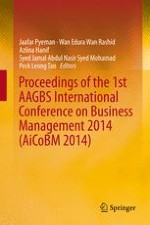2016 | OriginalPaper | Chapter
37. Information Technology and Competitive Advantages Among Small and Medium Enterprises in Malaysian Tourism Industry
Authors : Leviana Andrew, Ariff Md Ab Malik
Published in: Proceedings of the 1st AAGBS International Conference on Business Management 2014 (AiCoBM 2014)
Publisher: Springer Singapore
Activate our intelligent search to find suitable subject content or patents.
Select sections of text to find matching patents with Artificial Intelligence. powered by
Select sections of text to find additional relevant content using AI-assisted search. powered by
